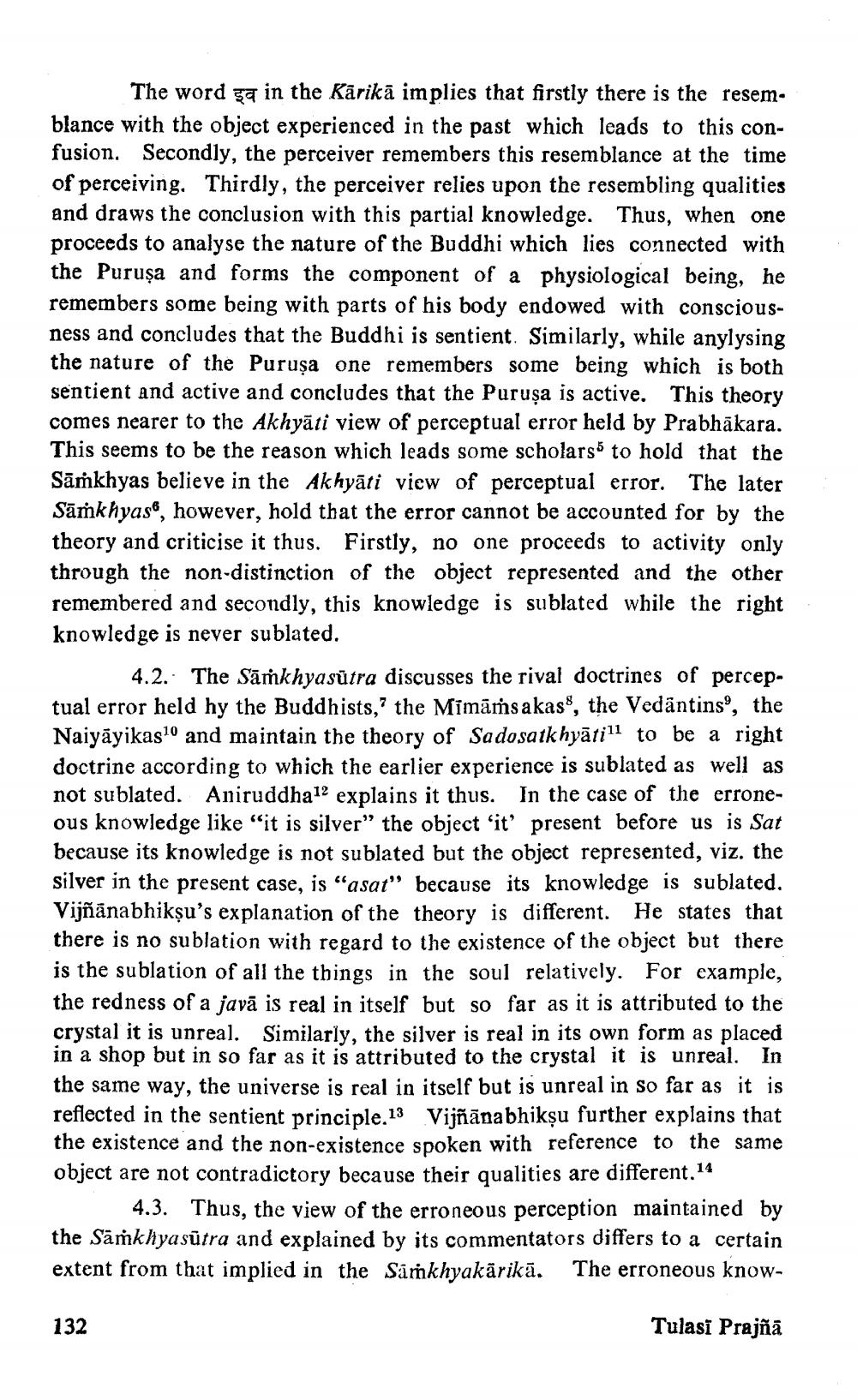________________
The word ga in the Kārikā implies that firstly there is the resemblance with the object experienced in the past which leads to this confusion. Secondly, the perceiver remembers this resemblance at the time of perceiving. Thirdly, the perceiver relies upon the resembling qualities and draws the conclusion with this partial knowledge. Thus, when one proceeds to analyse the nature of the Buddhi which lies connected with the Puruşa and forms the component of a physiological being, he remembers some being with parts of his body endowed with consciousness and concludes that the Buddhi is sentient. Similarly, while anylysing the nature of the Puruşa one remembers some being which is both sentient and active and concludes that the Puruşa is active. This theory comes nearer to the Akhyāti view of perceptual error held by Prabhākara. This seems to be the reason which leads some scholars to hold that the Sāṁkhyas believe in the Akhyāti view of perceptual error. The later Sāṁkhyase, however, hold that the error cannot be accounted for by the theory and criticise it thus. Firstly, no one proceeds to activity only through the non-distinction of the object represented and the other remembered and secondly, this knowledge is sublated while the right knowledge is never sublated.
4.2. The Sāṁkhya sutra discusses the rival doctrines of perceptual error held hy the Buddhists,” the Mimāṁs akase, the Vedāntins', the Naiyāyikaslo and maintain the theory of Sadosatkhyātill to be a right doctrine according to which the earlier experience is sublated as well as not sublated. Aniruddha12 explains it thus. In the case of the erroneous knowledge like "it is silver" the object 'it' present before us is Sat because its knowledge is not sublated but the object represented, viz. the silver in the present case, is “asat” because its knowledge is sublated. Vijñānabhikṣu's explanation of the theory is different. He states that there is no sublation with regard to the existence of the object but there is the sublation of all the things in the soul relatively. For example, the redness of a javā is real in itself but so far as it is attributed to the crystal it is unreal. Similarly, the silver is real in its own form as placed in a shop but in so far as it is attributed to the crystal it is unreal. In the same way, the universe is real in itself but is unreal in so far as it is reflected in the sentient principle.13 Viiñānabhikṣu further explains that the existence and the non-existence spoken with reference to the same object are not contradictory because their qualities are different.14
4.3. Thus, the view of the erroneous perception maintained by the Sāṁkhyasūtra and explained by its commentators differs to a certain extent from that implied in the Sámkhyakārikā. The erroneous know
132
Tulasi Prajña




